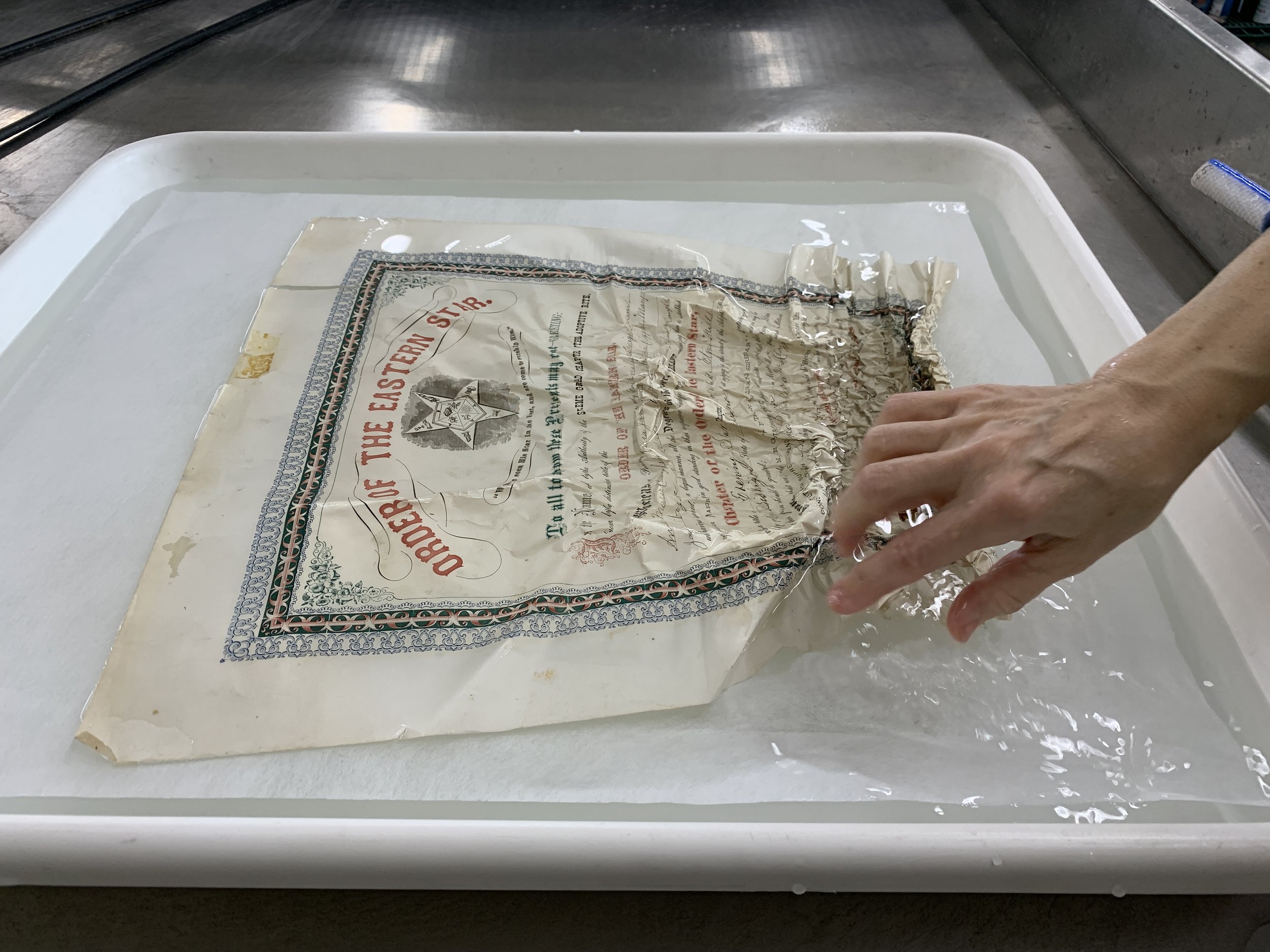At first glance, it isn't easy to know precisely what these tightly rolled documents are. Fortunately, the stewards of these documents - one paper, one parchment -know exactly what they are and their importance.
Established in 1850, The Order of the Eastern Star is a fraternal organization promoting charity and education. These two charters are from the 10th Chapter of the Supreme Grand Chapter of the Adoptive Rite in Etna Mills (now known as Etna), California, established on January 29, 1873.
These original charters were present at every meeting from the date of institution until a devastating fire on December 8, 2013, destroyed the original lodge building. The charters were in a metal tube, inside a thick cardboard tube, inside a fireproof safe. A Chapter No. 10 member shared that "from its location at the back of the ground floor, the safe dropped to the ground below the basement. The encasements preserved the documents but heat damage was devastating." It was important to the members that these documents be saved after the fire. Fortunately The Center’s Paper Conservation Department was up to the challenge.
Before treatment, the two documents are fused together.
The two documents were incredibly brittle and could not be safely unrolled during the initial examination. Parchment, a stiff and thin material made from the prepared cellulose-based composite, such as the skin of an animal. The parchment document was highly distorted, and the nature of the natural consistency of the skin had changed. There was damage to the collagen structure of the parchment. There was no heavy soot, but there was a layer of surface soiling on the outside of the roll. The portion of exposed parchment had broken away and had separated from the roll.
Before treatment, the portion of exposed parchment had broken away and separated from the roll.
While still rolled together, the two documents were humidified passively in a Goretex package for 24 hours. Once humidified, the conservator carefully separated the documents by physically unrolling each section by hand.
The paper and parchment structures were permanently changed because the documents were rolled so tightly and exposed to such extreme heat. Due to the memory of the objects, it is not possible for them to be completely flattened and returned entirely to their original forms. However, the treatment would be able to reduce the distortions significantly. Newly separated, each document could now undergo its own treatment.
During treatment, the paper document is now separated from the parchment
Paper document, during treatment
Detail of paper document during treatment
Verso of paper document during treatment
The paper document was water washed to relax the support and minimize the staining. The document was then stretched using Plexiglas and clips to minimize the distortion. The piece was dried and flattened between blotters under weights. Losses were repaired from the reverse using Japanese tissue and wheat starch paste.
The paper document undergoes a water bath treatment
The paper document undergoes a water bath treatment
The paper document was stretched using acrylic and clips to minimize the distortion.
The parchment document was humidified in a Goretex package multiple times. The piece was flattened and dried between cotton blotters under weights. The conservator used Japanese tissue and wheat starch paste on the verso to reattach the separated fragment and repair tears. Next, they used appropriate weight paper and wheat starch paste to support the repair areas further and fill areas of loss with parchment of the proper weight and color. The filled areas of loss were retouched using colored pencils to integrate the fills with the parchment.
During Treatment
After Treatment
Now separated and flattened, each document can be viewed and read as originally intended. A representative from the Chapter shared, “we plan to display them in the lodge room and prominently display them for our 150th celebration this fall.”
Both documents, before treatment.
Paper document, after treatment
Parchment document, after treatment



















